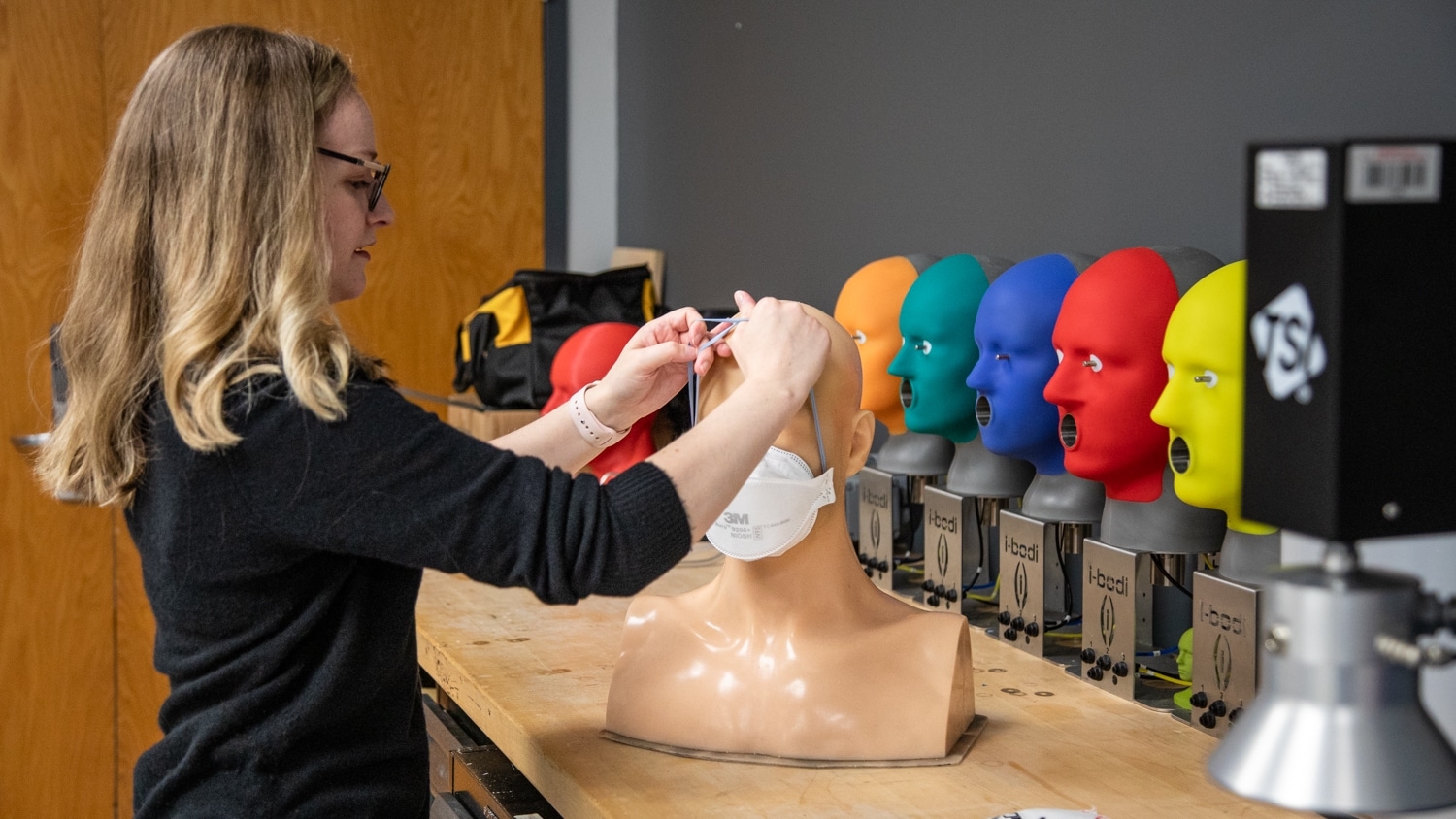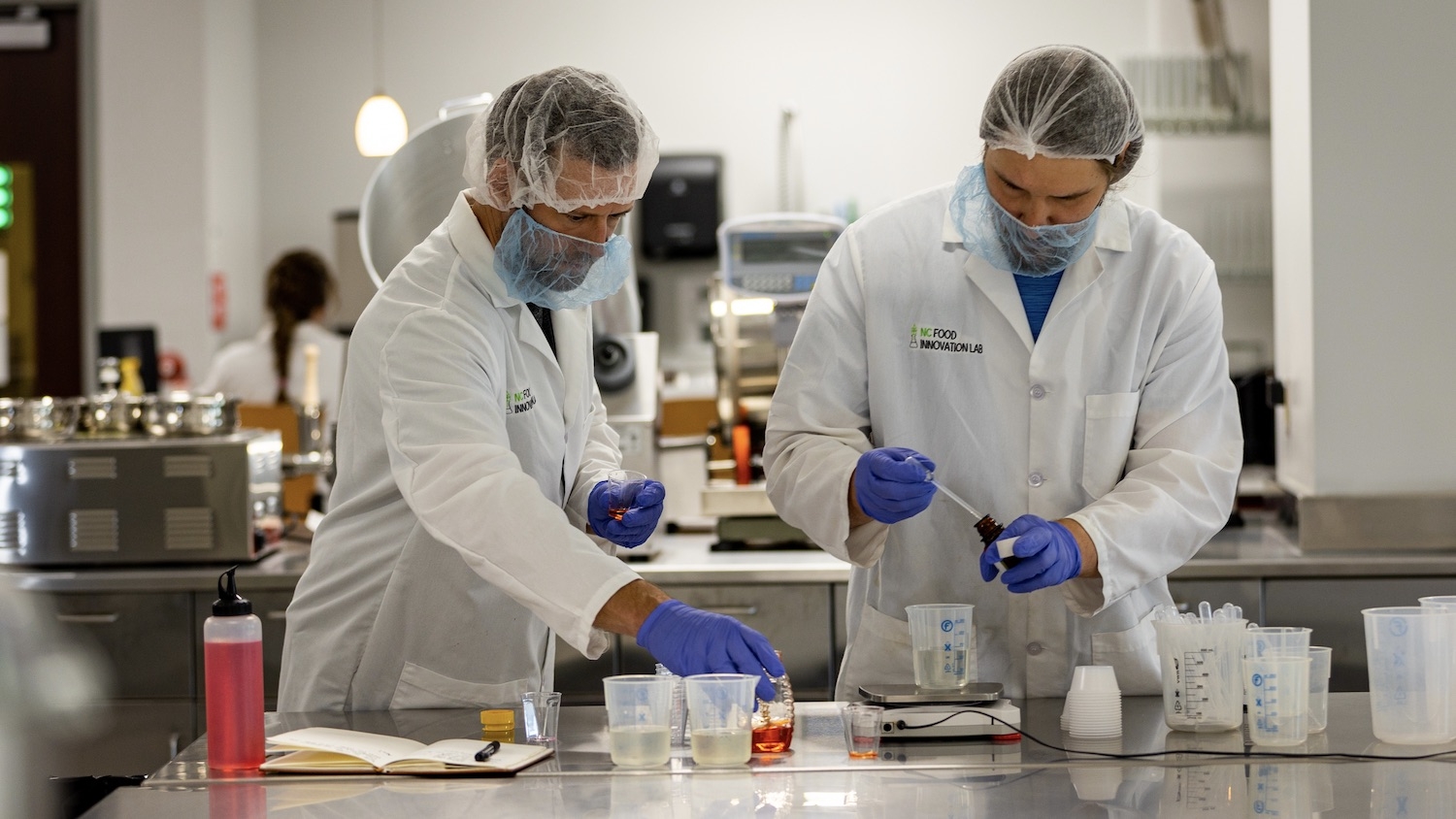Wilson College Doctoral Student Recognized With $10,000 Scholarship for Cutting-Edge Research

Four and a half years after the coronavirus pandemic began, critical research that began at NC State amid lockdowns and closures is, in many ways, still paying off — and in the process, recently led to a prestigious award for a Wilson College of Textiles doctoral student.
Earlier this semester, the American Society of Testing and Materials, (ASTM) awarded Melissa Armistead, a fiber and polymer science Ph.D. student, with a $10,000 scholarship.
Just four researchers received the award, worldwide.
The accolades were, in no small part, a product of Armistead’s collaboration with the international testing standards organization’s personal protective clothing and equipment committee known as “F23.”
Armistead’s work with F23 dates back to the early days of the COVID-19 pandemic; think back to when public health leaders were preaching social distancing and measuring case count “curves.”
Today, though, Armistead’s work remains front and center — and is on the cusp of helping first responders on a different sort of front lines: the front lines of fighting wildfires.
“It’s always been a very clear mission,” Armistead says.
Research with origins in the pandemic’s early days
Go back to 2020, and there was an almost frantic urgency to study which facial coverings and respirators would, and wouldn’t, be effective in stopping the spread of coronavirus particles.
Amid that chaos, scientists at the Wilson College’s Textile Protection and Comfort Center (TPACC) supported industry partners in analyzing the efficacy of a wide range of products — then a critical part of fighting the health crisis.
“We tested everything from N95s to surgical masks to barrier face coverings,” Armistead recalls, noting how her focus developed.
“Everyone was coming to us saying, ‘we need a way to evaluate our products,’” she says. “We realized, ‘we need a more realistic method, and it needs to be standardized, repeatable and reliable.”
In concert with Wilson College faculty, including Assistant Professor Bryan Ormond, Armistead worked with cutting-edge equipment at TPACC to develop testing standards that were integral in the production of higher-caliber respirators.
And that work set the stage for present day research into another central mission at TPACC: protecting firefighters.
“It just naturally transitioned over,” Ormond says.
Supporting the fire service
Applying lessons learned from her work with facial coverings at the height of the pandemic, Armistead — along with Ormond and TPACC researchers — are now working with the Wildlife Conservancy on a grant-funded product aimed at protecting wildland firefighters.
As the first responders battling wildfires like those witnessed in California and Canada in recent years, these firefighters’ work holds inherent dangers, often without adequate respiratory protection.
“Wildland firefighters really have no respiratory protections,” Ormond says. “Their ‘state of the art’ is essentially a bandana.”
TPACC researchers are now aiming to answer a key question: what type of respirator might be dually comfortable and effective for crews that might spend days, or weeks, in the field, fighting wildfires in the face of often unrelenting heat?
With Armistead having headed up testing inside TPACC, the group soon hopes to begin “wear tests” with active firefighter participants.
Coming full circle
While there’s plenty work yet to come, the full-circle nature of Armistead’s research is impressive to Ormond.
“I think COVID was one thing,” he says. “Then, you switch groups that you’re looking at, and switch over to firefighters and really trying to understand them, and understand their application.”
For Armistead, award in hand, the experience is illustrative of the dynamic opportunities offered at TPACC, a dynamic hub of industry and academia, focused on textile comfort and protection.
“It’s been really incredible that we can do everything here,” she says. “I very much appreciate the opportunity to be able to give back and do this research that can make an impact for, hopefully, so many people.”
This post was originally published in Wilson College of Textiles News.
- Categories:


